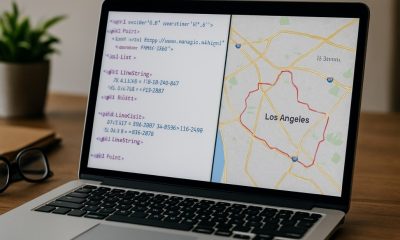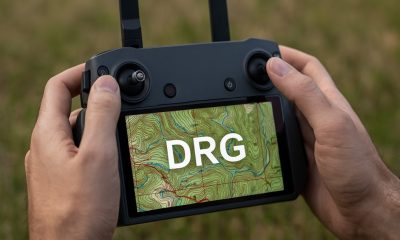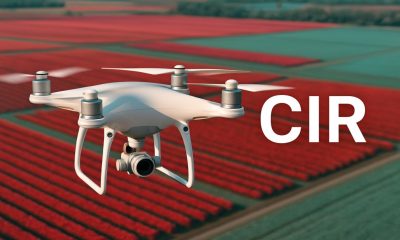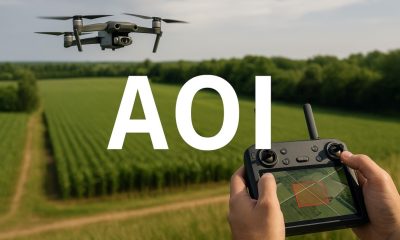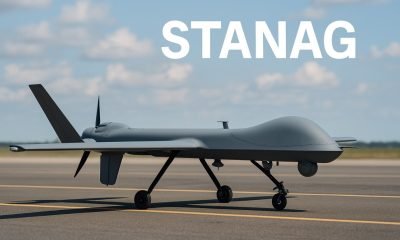Indian Drone Regulations
Drone Operating Rules in India
Published
11 months agoon
Table Of Contents

Drone Operating Rules
Drone operating rules in India involve adhering to a comprehensive set of guide lines designed to ensure safety and compliance with national regulations. The Directorate General of Civil Aviation (DGCA) mandates specific operating limits for drone pilots. These rules are essential to avoid accidents and ensure safe integration of drones into the airspace.
Maximum Altitude
Height Restriction
- General Rule: Drones must not be flown higher than 120 meters (400 feet) above ground level. This restriction helps prevent conflicts with manned aircraft.
- Exceptions: Specific operations requiring flights above 120 meters must obtain special permission from the DGCA. These exceptions are typically granted for specialized commercial activities, such as surveying tall structures or other specific applications.
Distance from People
Safe Distance for Basic Operations
Operators must maintain a minimum distance from uninvolved people to ensure safety and reduce the risk of injury:
- Basic Operations: Maintain at least 30 meters (100 feet) from uninvolved people.
- Crowded Areas: Drones should not be flown over large gatherings of people, such as concerts, sporting events, or parades, without special permission.
Advanced Operations
With an Unmanned Aircraft Operator Permit (UAOP), operators are allowed to fly closer to people, provided they adhere to specific safety protocols:
- Close Proximity: Operators with a UAOP can fly drones closer than 30 meters, but must follow detailed safety measures and risk assessments.
- Informed Consent: In certain cases, flying close to people is permissible if those individuals have given their informed consent and are aware of the risks.
Restricted Airspace
No-Fly Zones
Certain areas are designated as no-fly zones where drone operations are strictly prohibited. These include:
- Airports: Drones must not be flown within a specified distance of airports and aerodromes to prevent interference with manned aircraft.
- Heliports: Similar restrictions apply around heliports and medical evacuation sites.
- Military Installations: Areas around military bases and other defense-related facilities.
- National Parks: Flying drones in national parks is generally prohibited to protect wildlife and the environment.
- Critical Infrastructure: Areas such as power plants, government buildings, and other critical infrastructure are off-limits to drones.
Controlled Airspace
Controlled airspace is managed by air traffic control services and requires special permissions for drone operations:
- Permissions: Operators must obtain authorization from the DGCA to fly in controlled airspace. This includes providing flight plans and ensuring compliance with specific safety requirements.
- Coordination: Communication with air traffic control (ATC) may be necessary during operations in controlled airspace.
Temporary Flight Restrictions (TFRs)
Temporary flight restrictions may be imposed for specific events or emergencies, such as natural disasters, VIP movements, or large public gatherings:
- Notices to Airmen (NOTAMs): Operators must check NOTAMs for any temporary restrictions before flying.
Visual Line of Sight (VLOS)
Requirement
Operators must keep their drone within visual line of sight (VLOS) at all times without the aid of visual enhancement devices such as binoculars or telescopes:
- Definition: VLOS means being able to see the drone with unaided vision throughout the flight.
- Exceptions: Special permissions are required for Beyond Visual Line of Sight (BVLOS) operations, which involve additional safety protocols and equipment.
Importance
Maintaining VLOS ensures that the operator can maintain control of the drone and respond quickly to any potential hazards, such as obstacles or other aircraft:
- Spotters: Using a visual observer or spotter can help maintain VLOS, especially in complex environments.
- Clear View: Ensure a clear and unobstructed view of the drone during flight.
Night Operations
Lighting Requirements
Drones operated at night must have appropriate lighting to ensure they are visible and can be safely navigated:
- Anti-Collision Lights: Drones must be equipped with anti-collision lights visible from at least 3 nautical miles.
- Navigation Lights: Additional navigation lights may be required to maintain orientation and visibility.
Certification
Operators must hold an Advanced Operations Certificate to fly drones at night. This certification involves additional training and safety measures:
- Enhanced Visual Aids: Use of enhanced visual aids, such as night-vision goggles, may be permitted with special approval.
- Pre-Flight Checks: Conduct thorough pre-flight checks to ensure all lighting and equipment are functioning correctly.
Summary
Adhering to operating rules is crucial for ensuring safe and compliant drone operations in India. By following these guidelines, operators can minimize risks, avoid penalties, and contribute to a safer airspace. Understanding and complying with altitude limits, distance requirements, restricted airspace rules, VLOS, and night operations are essential components of responsible drone usage.
To Learn more about acronyms used in this article visit our Drones Acronym Page.


